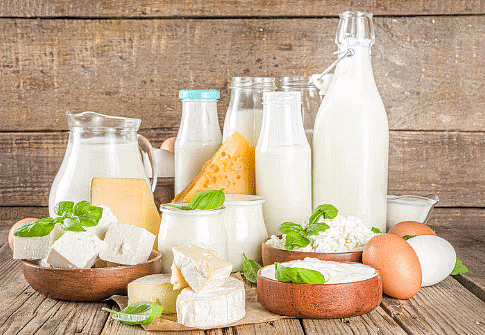Our Food - 2 Class 3 Worksheet SST
Q1: Multiple-Choice Questions (MCQs)
(i) What food group provides our bodies with energy and is a major source of carbohydrates?
(a) Fruits
(b) Vegetables
(c) Grains
(d) Dairy products
(ii) Which vitamin is important for healthy bones and is often obtained from sunlight?
 (a) Vitamin A
(a) Vitamin A
(b) Vitamin B
(c) Vitamin C
(d) Vitamin D
(iii) Which nutrient group is necessary for building and repairing body tissues?
(a) Carbohydrates
(b) Proteins
(c) Fats
(d) Vitamins
(iv) Which food group includes milk, cheese, and yogurt, and is a good source of calcium?
 (a) Fruits
(a) Fruits
(b) Grains
(c) Vegetables
(d) Dairy products
Q2: Fill in the Blanks
(i) Eating a variety of foods from different __________ groups helps us stay healthy.
(ii) Fruits and vegetables are rich in __________ and vitamins that are good for our health.
(iii) Drinking plenty of __________ is important to keep our bodies hydrated.
(iv) Milk and dairy products are sources of __________, which helps build strong bones and teeth.
(v) ating in moderation means consuming the right amount of food to avoid overeating or __________.
Q3: True/False Questions
(i) All foods provide the same nutrients in equal amounts.
(ii) Vegetables and fruits are important sources of vitamins and minerals.
(iii) Protein is a nutrient that mainly provides energy to our bodies.
(iv) Drinking sugary beverages is a good way to stay hydrated.

(v) A balanced diet includes eating a variety of foods in appropriate portions.
Q4: Answer the following questions
(i) What are some factors that influence the choice of food grains in different regions of a country?
(ii) Name two examples of commonly used vegetable oils in Indian cooking and explain why they are popular.
(iii) What components should a balanced diet include to support overall health?
(iv) Why do some people prefer ghee as a medium for cooking in certain parts of India?
You can access the solutions to this worksheet here.
FAQs on Our Food - 2 Class 3 Worksheet SST
| 1. What is the importance of food in our lives? |  |
| 2. How does the process of digestion work? |  |
| 3. What are the different types of nutrients found in food? |  |
| 4. How does food impact our overall health? |  |
| 5. How does food production affect the environment? |  |















